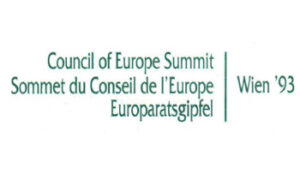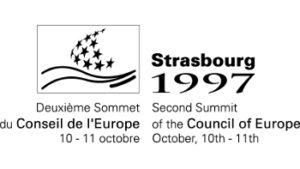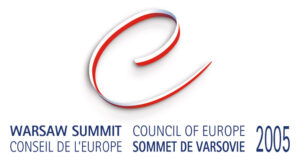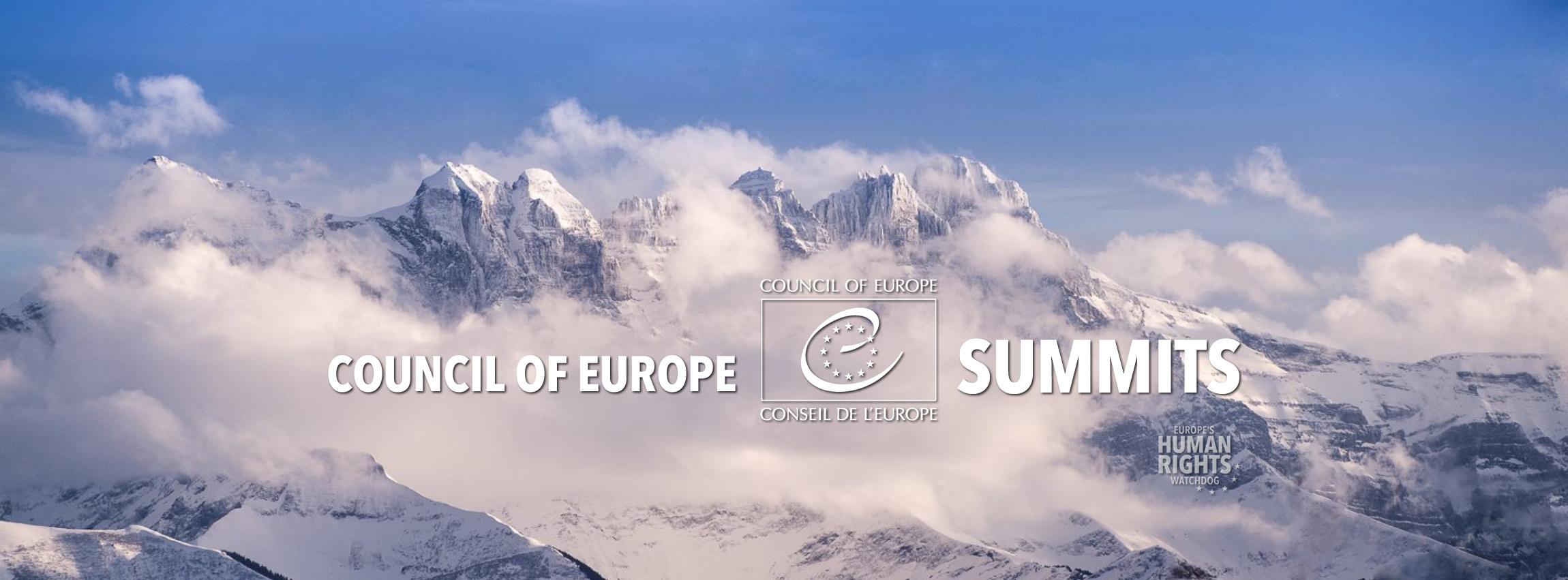As is customary in intergovernmental organisations, the decision-making body of the Council of Europe gathers once a year for a plenary meeting. Since its members are the foreign ministers of the member States, this meeting is called a ministerial conference. However, if decisions of great importance are to be taken, a meeting at the highest governmental level can be called for. The participants in such a summit are the Heads of State and Government of the member States.
Since its foundation in 1949, the Heads of State and Government of the Council of Europe have made use of this possibility only three times.
First Summit: Vienna, Austria 1993
 The Vienna Summit was held after the Berlin wall had fallen and number of new democracies had developed in central and eastern Europe. Many of them had joined the Council of Europe and the number of member States of the organisation had increased significantly. In view of these developments, the Heads of State and Government of the member States decided to hold their very first summit since the foundation of the Council of Europe in 1949. At the summit, the following action was initiated:
The Vienna Summit was held after the Berlin wall had fallen and number of new democracies had developed in central and eastern Europe. Many of them had joined the Council of Europe and the number of member States of the organisation had increased significantly. In view of these developments, the Heads of State and Government of the member States decided to hold their very first summit since the foundation of the Council of Europe in 1949. At the summit, the following action was initiated:
- by adding a new protocol (No. 11) to the European Convention on Human Rights a single European Court of Human Rights was established, which replaced the existing controlling bodies and functioned on a permanent basis
- the Framework Convention for the Protection of National Minoritieswas drafted
- the European Commission against Racism & Intolerance (ECRI) was created in order to combat racism, discrimination, xenophobia, antisemitism and intolerance at European level
- the Council of Europe’s Congress of Local and Regional Authorities was founded in order to give the regions in Europe a voice
- the European Youth Campaign All different – all equal was launched to mobilise the public in favour of a tolerant society
Second Summit: Strasbourg, France 1997
 By the time the Strasbourg Summit was held, the Council of Europe’s number of member States had once again substantially grown. The organisation now had 40 members – exactly four times as many as in 1949. At the summit, the Heads of State and Government inter alia decided to
By the time the Strasbourg Summit was held, the Council of Europe’s number of member States had once again substantially grown. The organisation now had 40 members – exactly four times as many as in 1949. At the summit, the Heads of State and Government inter alia decided to
- create an office of Commissioner for Human Rights to promote respect for human rights in the member States
- prohibit the cloning of human beings by drafting an additional protocol to the Convention on Human Rights and Biomedicine (Oviedo Convention)
- strengthen social cohesion in Europe by setting up a specialised unit within the Council of Europe
- create the Group of States against Corruption (GRECO)in order to fight corruption more effectively
Third Summit: Warsaw, Poland 2005
 When the Warsaw Summit was held, the Council of Europe had just reached its current number of 46 member States. At the summit, the Heads of State and Government inter alia
When the Warsaw Summit was held, the Council of Europe had just reached its current number of 46 member States. At the summit, the Heads of State and Government inter alia
- opened the Council of Europe Convention on Action against Trafficking in Human Beings for signature
- established a Council of Europe Forum for the Future of Democracy to strengthen democracy, political freedoms and citizens’ participation in Europe
- decided to prepare the pan-European campaign Stop Domestic Violence to combat violence against women, including domestic violence
- set the course for the creation of the Convention on Protection of Children against Sexual Exploitation and Sexual Abuse (Lanzarote Convention)
- decided to relaunch the successful 1995 Europe-wide youth campaign All different – all equal against racism, xenophobia, antisemitism and intolerance
Fourth Summit: Reykjavik, Iceland 16-17 May 2023
 By the time the fourth summit was held, Europe faced new challenges: Democracy was backsliding, efforts to undermine the rule of law were made even by some member States, and challenges to the human rights protection system were on the rise. Russia’s aggression against Ukraine had brough war back to Europe and led to the Russian Federation’s expulsion from the Council of Europe in 2022, after 26 years of membership.
By the time the fourth summit was held, Europe faced new challenges: Democracy was backsliding, efforts to undermine the rule of law were made even by some member States, and challenges to the human rights protection system were on the rise. Russia’s aggression against Ukraine had brough war back to Europe and led to the Russian Federation’s expulsion from the Council of Europe in 2022, after 26 years of membership.
In order to respond to these challenges and set a common course, the Heads of State and Government of the Council of Europe member States decided inter alia to
- create a Register of Damage Caused by the Aggression of the Russian Federation Against Ukraine in the form of an Enlarged Partial Agreement
- take measures to protect the human rights and fundamental freedoms of the children of Ukraine
- adopt the Reykjavík Principles for Democracy in order to promote, protect and strengthen democracy throughout the member States
- recommit themselves firmly to the core values of the Council of Europe – human rights, democracy and the rule of law – the European Convention on Human Rights (ECHR) and the European Court of Human Rights (ECtHR) as the cornerstones of the Council of Europe’s protection of human rights
- ensure the respect for the rule of law, inter alia by raising the profile of the Venice Commission and giving more visibility and status to its Rule of Law Checklist
- initiate the Reykjavik process which not only aims to make the environment a visible priority of the Council of Europe in a world which faces a triple crisis of pollution, climate change and loss of biodiversity, but also wants to contribute to the development of common responses these challenges
_
Logos © CoE

